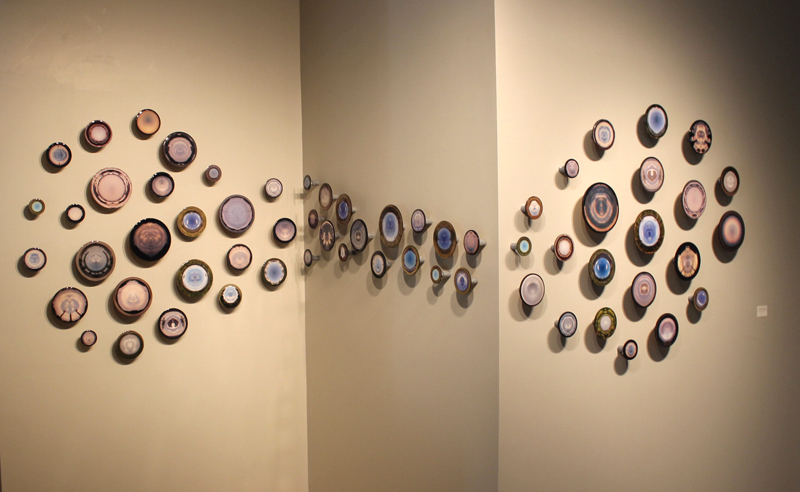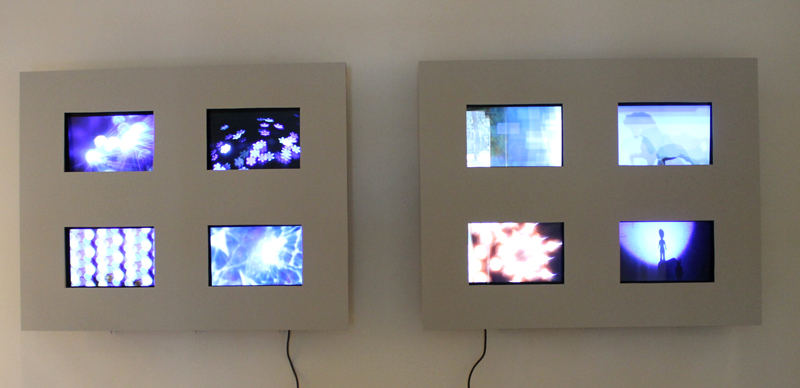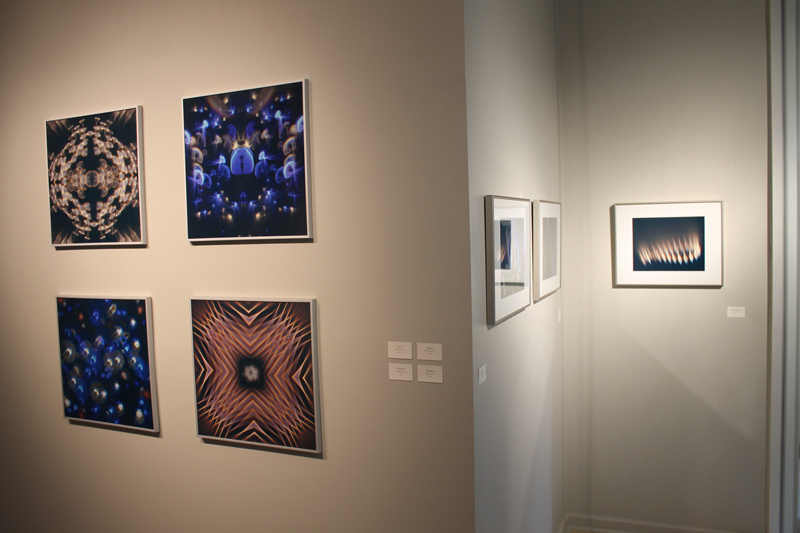
Craig Coleman experiments in a ‘laboratory of light’
Mercer University’s Art Department will host a closing reception Friday, February 8 at 10 a.m. in the Hardman Hall Gallery for “Laboratory of Light: Some Results of Unorthodox Imaging.” The exhibit, which opened on January 14, features multimedia works by artist and faculty member Craig Coleman, exploring expanded forms of photography and light projections.
“All of the works in the show have some relation to light itself and explore different ways of presenting photographic information aesthetically,” wrote Coleman in an emailed artist statement. “I am interested in the aesthetic qualities of traditional photographic prints and in breaking with these traditions.”
Coleman focuses on process-oriented image-making using experimental techniques involving lensless photography and/or unconventional lenses. He presents the results in printed form, on digital monitors, and through projections using a modified slide projector. In a conversation, the artist described his work as lying somewhere between a photogram and a photograph.
“The physical holding of the lens separate from the camera body, the improvisational process of rearranging the LED lights I am photographing, and the placement of objects against the opening of the camera body unfold the possibilities in real time involving the human hand in the process of shaping the final image in a way that traditional photography does not.”
The exhibit is divided into three sections. A projected image is displayed using a modified slide projector. Coleman placed the projector prominently in the gallery but the image created is best viewed from outside the room. This puts an emphasis on the equipment used to create the image. Experimentation and process are of paramount importance to Coleman’s artistic practice.
“The projection piece, ‘Pollinator,’ comes from ideas I have been exploring for over ten years now, using modified slide projectors to create live moving images that enlarge small objects inside the projector. This piece presents a kind of opposite process in contrast to the “free lens” photographs on the other side of the gallery.”
A second section features a series of digitally manipulated landscapes, presented in circular nodes arranged in a blob-like pattern along three planes of the interior of the gallery. These images are older works in the artist’s canon, but they create a nice transition in the space. Even the arrangement of the nodes mimics the patterns found in the abstract photographic images created through Coleman’s lensless technique.
“The “Indeterminate Photo-form” piece, investigates space both physically and theoretically, calling on ideas from mathematics, aesthetics and memory.”
“Indeterminate Photo-form” by Craig Coleman.
The third section is the largest and most recent. Photos created using lensless photography are first displayed on eight monitors, within two arrangements of four, as slideshows of related images. To the right is a video on a single computer monitor, which is fully animated and includes sound effects. Further along the wall are images similar to those presented in the slide shows, but in printed form. His most recent work is displayed as a set of four images in which the abstract forms are digitally manipulated to create patterns similar to mandalas.
Abstract photographic images created by Craig Coleman were displayed in slide shows on eight monitors.
“The photographic images in this recent series are based on a new technique I am currently exploring using a DSLR camera with the commercial lens removed. This process of expanded photography allows me to use hand held alternative lenses (or no lens at all) to orchestrate and capture light refractions and shadows that occur on a small scale inside the body of the camera. I started using the camera this way because I was inspired by stage lighting, experimental film techniques, the history of photography and the sciences.”
Printed versions of a few of his abstract images were also on display.
Hardman Hall Gallery: 1400 Coleman Ave., Macon; 478-301-2591; http://departments.mercer.edu/artgallery/
Recent Content
-
Artsarticle ·
-
Artsarticle ·
-
Artsarticle ·



